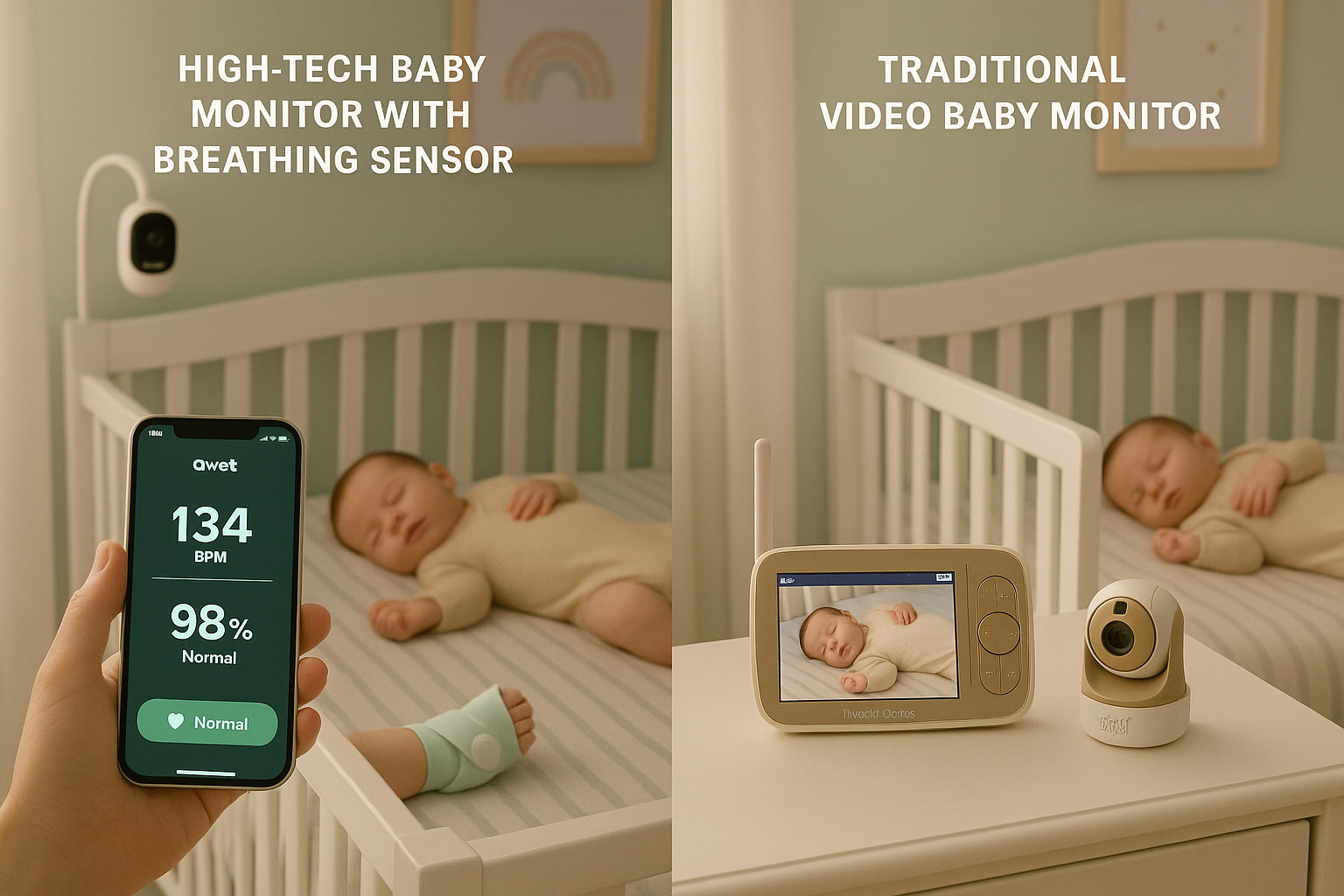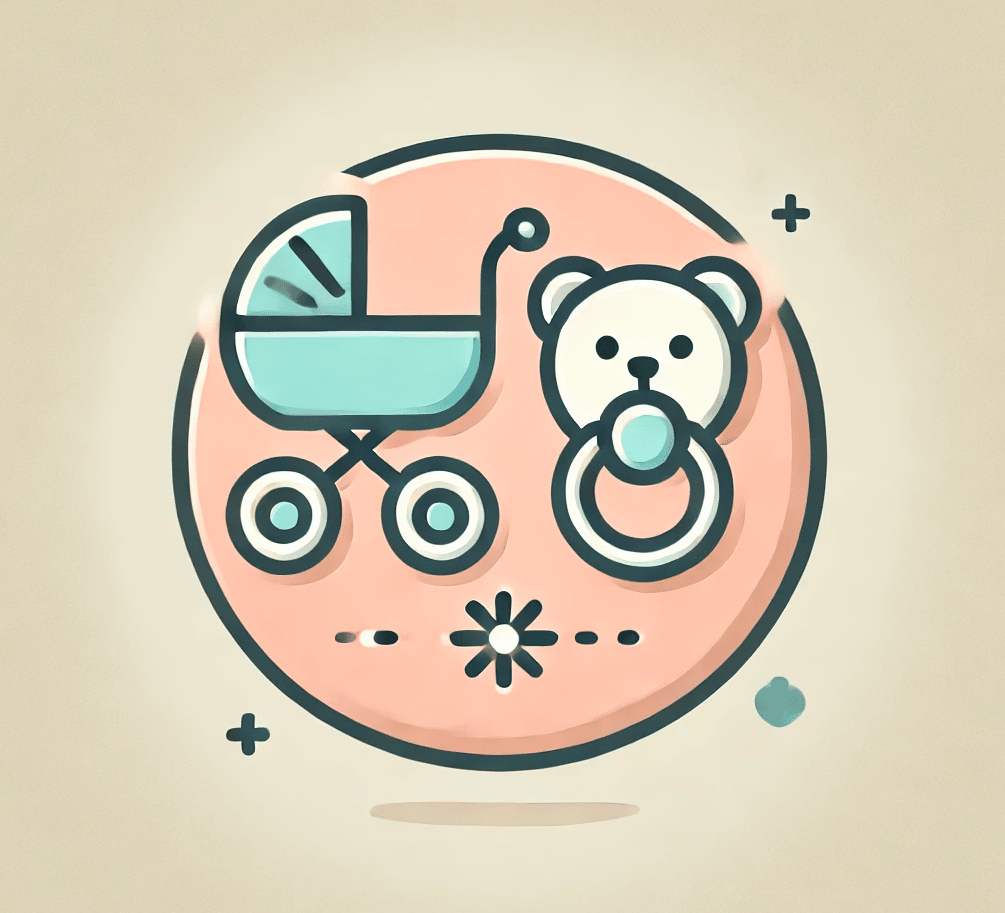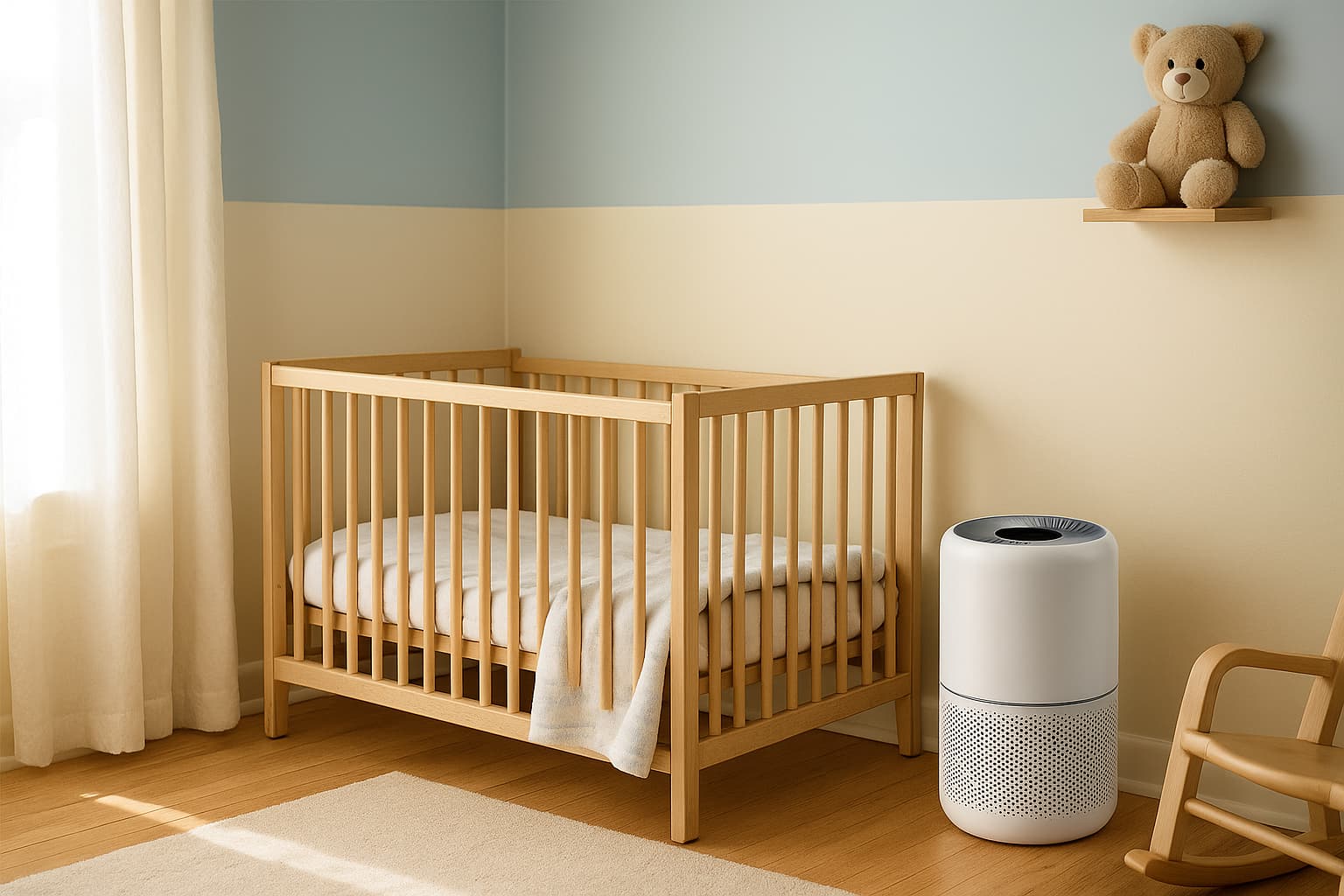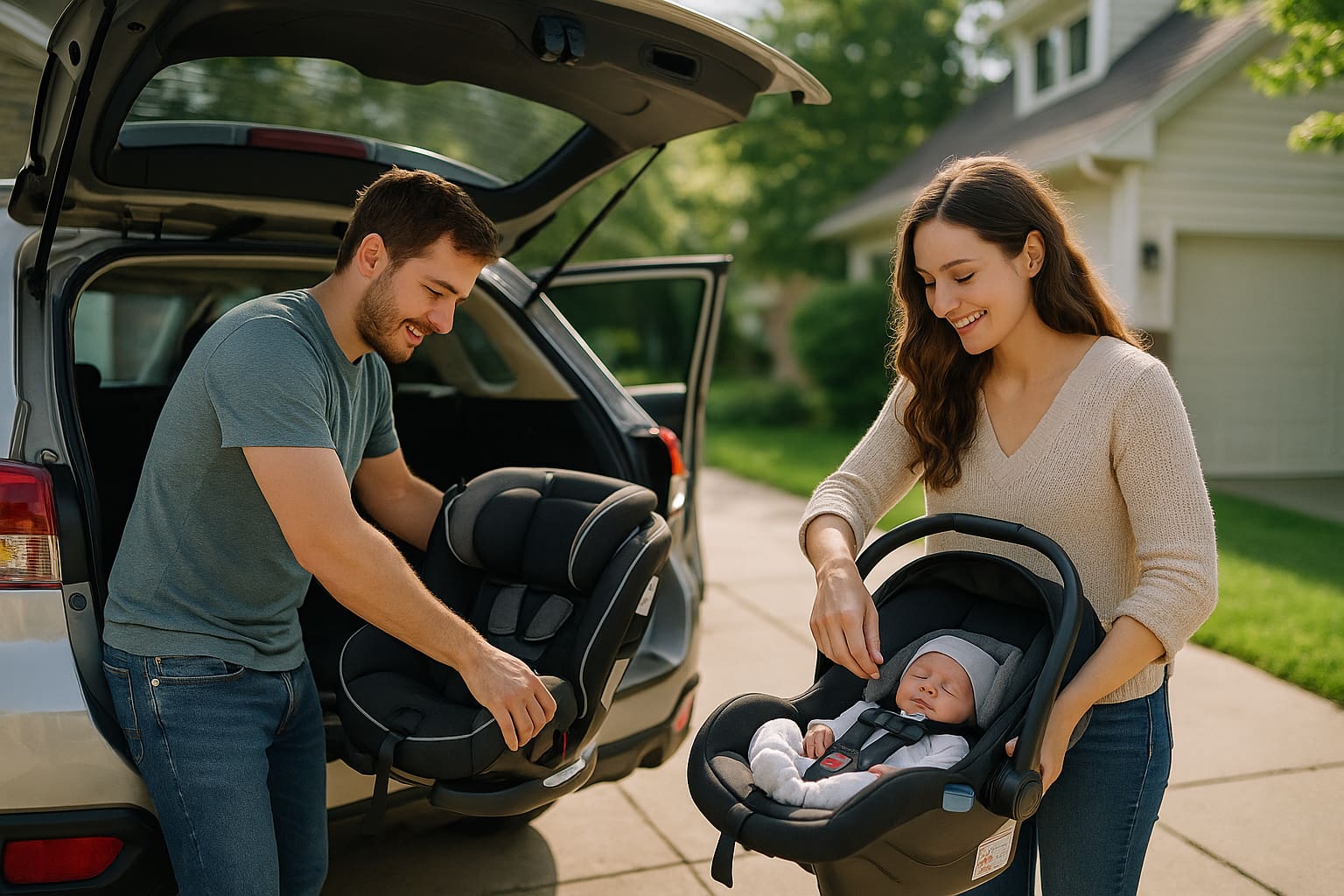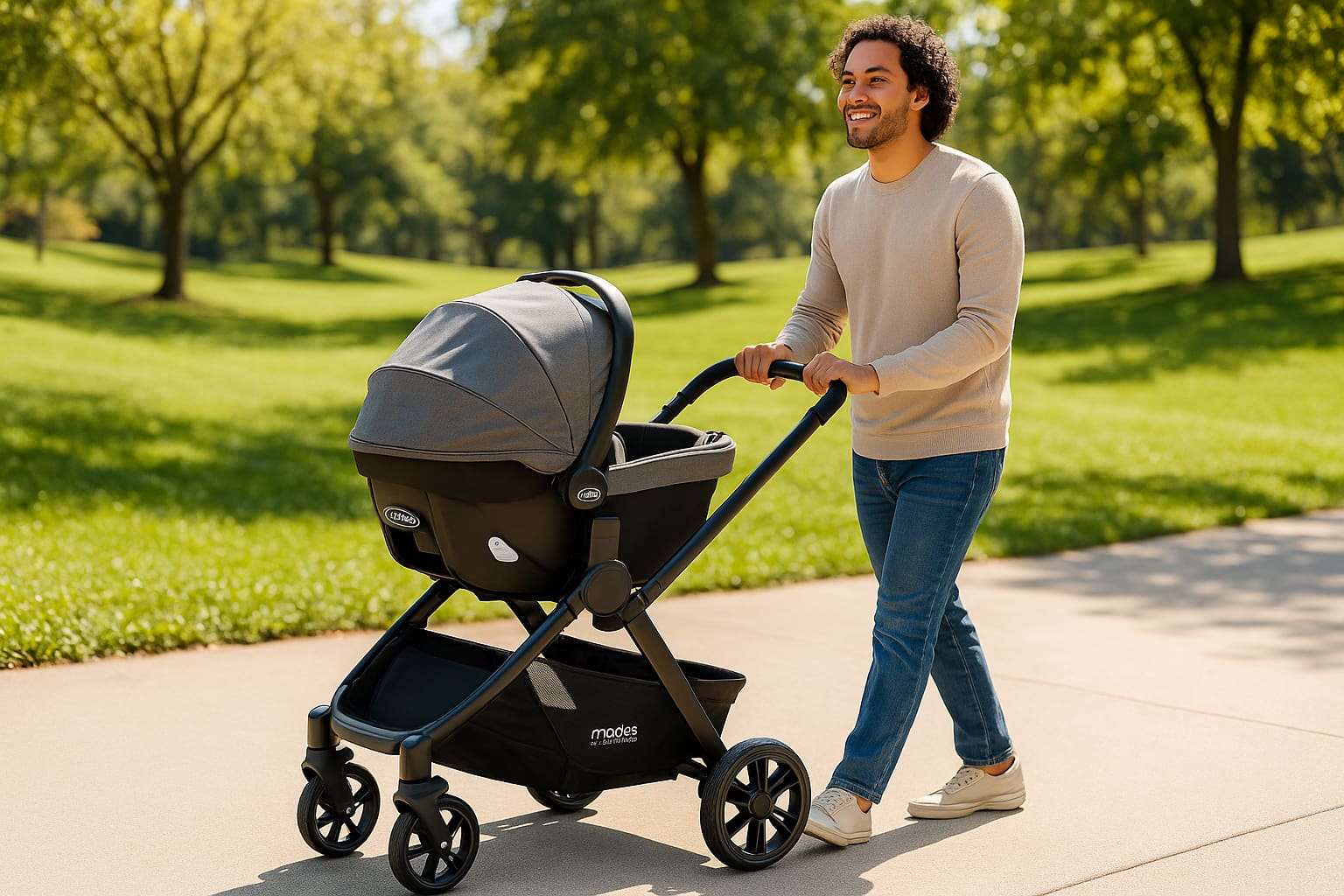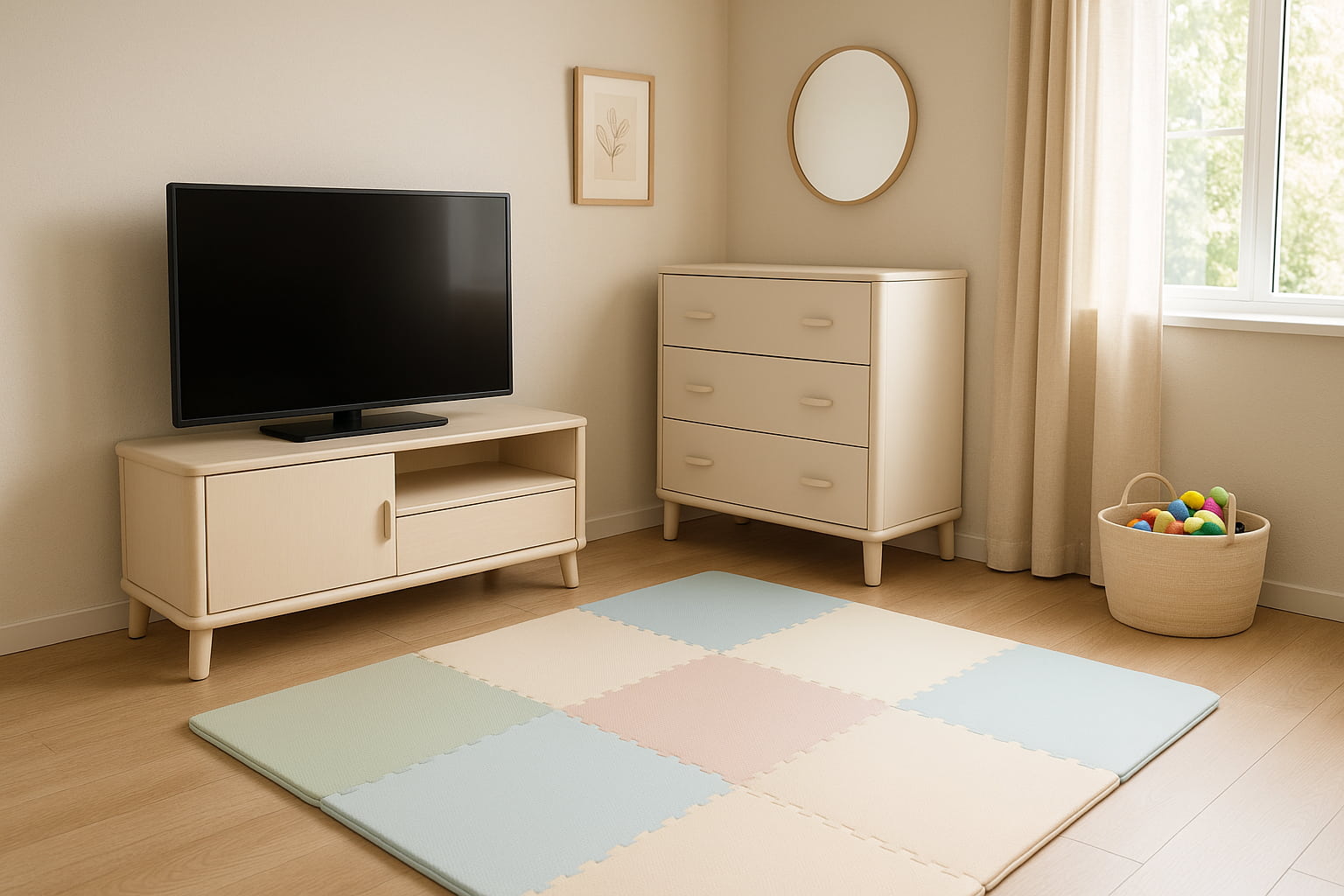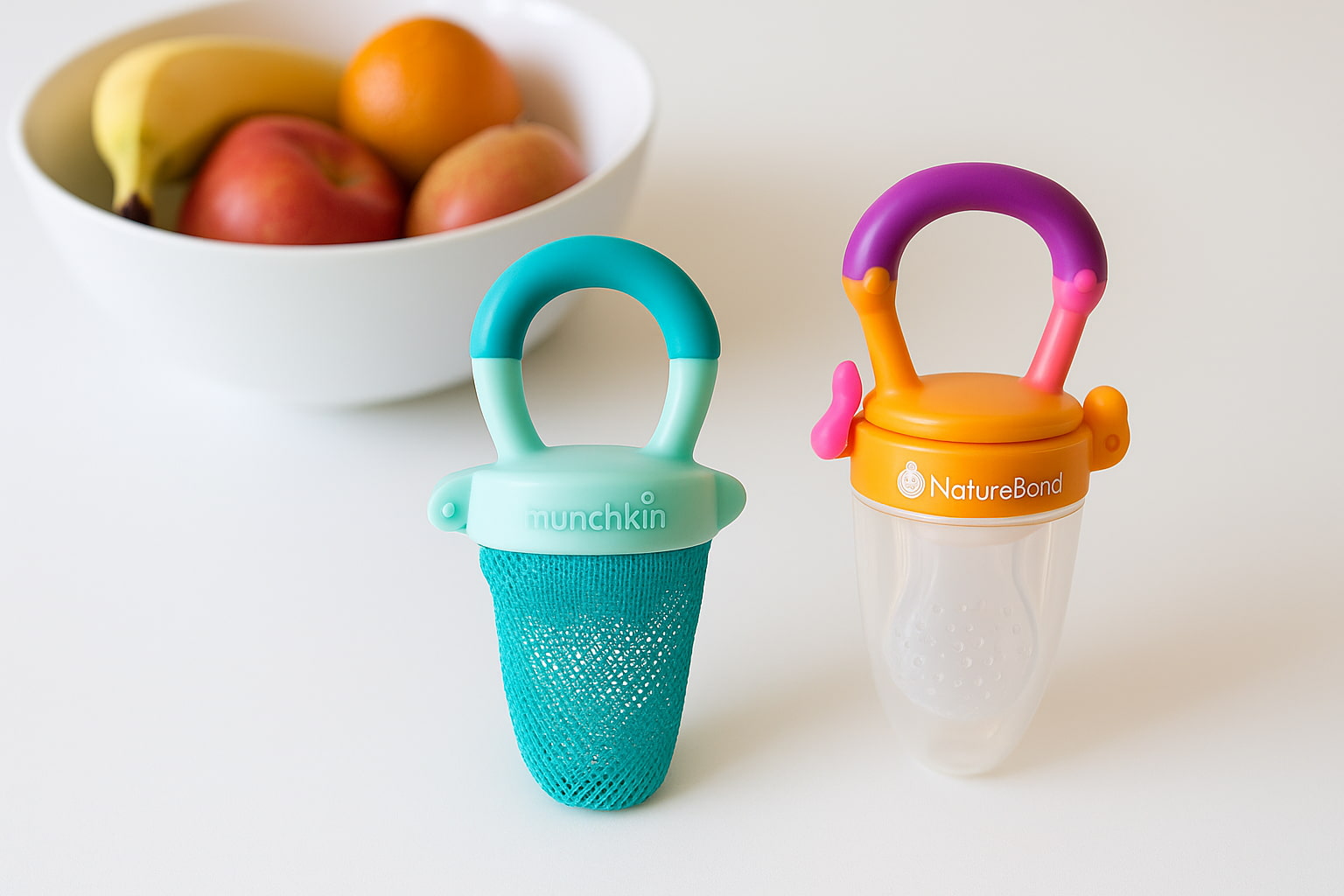Baby monitor with breathing monitor might sound like a must-have, especially when you’re a new parent trying to do everything right.
The idea of tracking every breath feels comforting. But is it always necessary?
Some monitors now go beyond just video or sound. They offer sleep analytics, movement tracking, and even oxygen level alerts.
Others keep it simple, and many parents still swear by those, too.
In this guide, we’ll compare the two:
- What breathing monitors actually measure
- When they offer real value
- And how to choose based on your baby’s needs (not just fear)
We’ll also cover privacy, performance, and smart baby monitor security, so you’re not just buying tech, you’re building peace of mind.
📦 Quick Comparison Table
| Feature | With Breath Monitoring | Without Breath Monitoring |
| Tracks breaths/movement | Yes | No |
| Sleep quality summaries | Often included | Rare |
| Wearable required? | Often (sock, band, clip) | No |
| EMF exposure level | Higher (Wi-Fi + sensor) | Lower (FHSS/local signal) |
| Price range | More expensive | Budget-friendly |
| Anxiety risk | May increase if overly watched | Less info, but less stress |
| Suitable for preemies? | Helpful (if recommended by doctor) | Basic only |
👀 Trying to decide between smart and traditional monitors first? You’d be surprised how differently they affect your routine. Check out our Smart Monitors vs Traditional Monitors comparison.
💨 What Is a Baby Monitor with Breathing Monitor?

These are smart baby monitors that track your baby’s breathing, motion, or rate while they sleep.
These monitors typically work using one of three main methods:
📦 Wearable sensors like Owlet or MonBaby (sock, band, clip)
📷 Motion tracking via a camera, such as Nanit (no contact)
💡 Sensor mats under the crib mattress (less common now)
You can watch live breathing, get warnings, and follow patterns using the data that is transferred to a mobile app.
Pros
- Offers reassurance to anxious parents
- Helpful for NICU grads or babies with sleep apnea
- Smart insights into sleep quality
Cons
- Can lead to over-monitoring or anxiety
- Many require subscription fees
- False alarms can disrupt your sleep
💡 Did You Know?
The American Academy of Pediatrics (AAP) clearly states that home cardiorespiratory monitors do not reduce the risk of SIDS and should not be used as a replacement for safe sleep practices
🫁 How a Baby Monitor with Breathing Monitor Works (And When to Use It)
A baby monitor with breathing monitor doesn’t just show you your baby, it watches for movement so small, it can detect your baby’s breath.
Usually, those devices make use of one of the following technologies:
- Wearable sensors (like socks or clips) that track breathing motion, heart rate, or oxygen levels
- Non-contact radar or camera-based monitors work by detecting chest motion from a distance.
- Mattress-based pads that sense subtle motion or stillness beneath the baby
Once the data is collected, it’s sent to your phone via Bluetooth or Wi-Fi, often with alerts for irregular patterns or pauses in breathing.
🔊 What About Monitors Without Breath Tracking?

These are your classic video or audio baby monitors, and for many families, they’re more than enough.
These devices help you:
- Hear crying or fussing
- See sleep position and movement
- Track room temperature (in many models)
- Keep an eye on your infant without going into the room
They don’t measure vitals, breathing, or sleep analytics, which some parents actually prefer.
Pros
- More affordable
- No wearable required
- Less tech = fewer worries
- Lower EMF exposure
Cons
- No sleep data or breathing alerts
- Less helpful if the baby has medical concerns
👶 Curious which baby monitors strike the best balance between safety and EMF levels? You’d be surprised what experts say. Here’s our deep dive on EMF radiation and baby monitors.
✅ When are these monitors actually helpful?
- For preemies or babies with breathing-related medical conditions (under medical supervision)
- Moving a baby to their own room or crib during sleep transitions
- When you need extra reassurance, especially for first-time parenting nerves
That said, they’re not medically necessary for every baby. False alarms are fairly common and can cause more stress than peace of mind if you’re not prepared.
📱 Still thinking about EMF and Wi-Fi exposure? You’d be surprised how much that varies by monitor type. Explore our EMF Radiation & Baby Monitors breakdown.
🛍️ Featured Monitors in This Comparison
🧦 Owlet Dream Duo – Smart Sock + HD Camera
Peace of Mind Monitoring with Vital Tracking
The Dream Duo combines a wearable sock that tracks heart rate and oxygen levels with a sleek 1080p camera for full-room visuals.
🍼 Why Parents Love Owlet Dream Duo
✅ Real-time oxygen and heart rate monitoring
✅ Predictive sleep support and trend data
✅ Comfortable sock that fits snugly for most babies
✅ Alerts for irregular breathing or low oxygen
💡 Thinking About It?
Perfect for parents who want visual monitoring and broad wellness tracking.
📱 Nanit Pro Smart Monitor + Breathing Wear
The Tech-Forward Choice for Hands-Off Monitoring
This monitor goes beyond just HD video streaming. It uses custom Breathing Wear to track your baby’s breathing motion and sleep patterns without requiring any attachments.
🍼 Why Parents Love Nanit Pro
✅ Sleep analytics and trend reports inside the Nanit app
✅ Breathing motion monitoring without cords or wearables
✅ Remote access from anywhere with encrypted video
✅ Clean 1080p video and auto night vision
💡 Thinking About It?
A go-to for tech-savvy parents who want insights without being intrusive.
📱 CuboAi 2025 Sleep Safety Bundle
The Baby Monitor That Combines Breathing Motion Detection & Smart Safety Alerts
CuboAi’s latest bundle uses AI-powered motion sensing to detect breathing irregularities, dangerous face-down positions, and cry patterns, all without attaching anything to your baby.
🍼 Why Parents Love CuboAi
✅ Real-time breathing motion detection with no wearables
✅ AI safety alerts (rollover, face covered, cry detection)
✅ 2.5K QHD night vision and temperature tracking
✅ Fully app-controlled, with encrypted streaming
💡 Thinking About It?
Loved by cautious parents who want an all-in-one baby safety suite, without sacrificing clarity or ease of use.
📱 Miku Pro Smart Baby Monitor (Updated 2025)
A Contact-Free Breathing & Sleep Monitor That Thinks Ahead
The Miku Pro reads breathing and sleep patterns in real-time using radar technology—no wearables, no cords. It gives parents instant alerts, sleep reports, and a clean app interface with enterprise-level encryption.
🍼 Why Parents Love Miku Pro
✅ Contact-free breathing tracking with no physical setup
✅ Instant alerts if breathing or sleep changes
✅ Encrypted HD video and audio with remote access
✅ Premium analytics (paid membership required)
💡 Thinking About It?
Perfect for parents who want zero-intervention monitoring and top-tier privacy.
💡 Fun Fact
Nanit’s computer‑vision monitors (like Nanit Pro Plus) use AI to track your baby’s breathing motion, no wearables needed. However, according to a MedCrave study, this can malfunction if your baby rolls or blankets shift
✅ Final Verdict
Both types of baby monitors can offer peace of mind, the real question is how much insight is helpful vs how much is too much.

Choose a Breathing Monitor if:
- You want high-tech peace of mind
- Your pediatrician recommends closer tracking
- You don’t mind using an app or wearable
Choose a Traditional Monitor if:
- You like less screen time and fewer notifications
- Budget and simplicity are top priorities
- You want plug-and-play, no subscriptions
The truth? There’s no “right” answer, only the one that fits your lifestyle, baby, and comfort zone.
🛍️ Products Mentioned Above
Here’s a quick recap of the monitors mentioned:
Owlet Dream Duo – Breathing sock + HD camera
Nanit Pro Monitor – Camera-based breathing tracking
CuboAi 2025 Bundle – Smart alerts + breathing motion detection
Miku Pro (2025 Model) – Contact-free breathing & sleep tracking
❓ Frequently Asked Questions
Q1: Can someone really hack my smart baby monitor?
Yes. Many Wi‑Fi baby monitors have been hacked due to weak default passwords or a lack of encryption. In some cases, strangers have spoken through the monitor’s speaker.
Q2: Is a non-Wi‑Fi monitor much safer?
Absolutely. Monitors that use a closed signal, like FHSS, don’t connect to the internet. That means no cloud risk, the feed stays local and private.
Q3: Is a VPN necessary for my baby monitor?
While not required, using a VPN to secure remote access can help. It adds an extra encryption layer and keeps data safe over public networks.
Q4: Do all monitors automatically get updated?
No. Not all brands support regular updates. That means security vulnerabilities can remain open unless you check for updates manually.
Q5: Can analog monitors be intercepted by others?
Yes, older analog models using open frequencies can be picked up by strangers nearby. Digital models with FHSS are much more secure and less prone to interception
⚠️ Affiliate Disclaimer
This post contains affiliate links. At no additional expense to you, we might receive a tiny profit if you purchase via them.
✍️ Written by Find For Baby
We help modern parents make smart, safety-first decisions with clarity, simplicity, and confidence.
